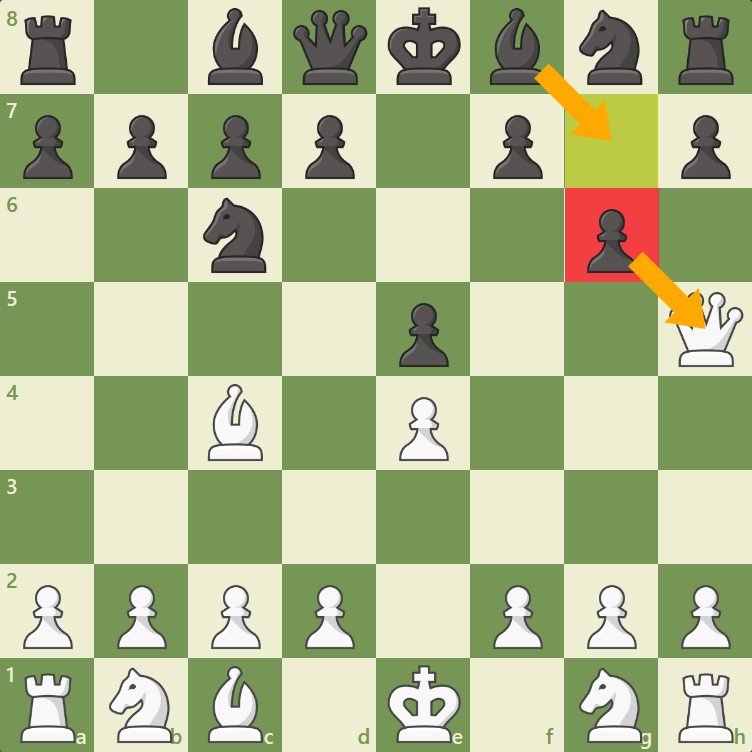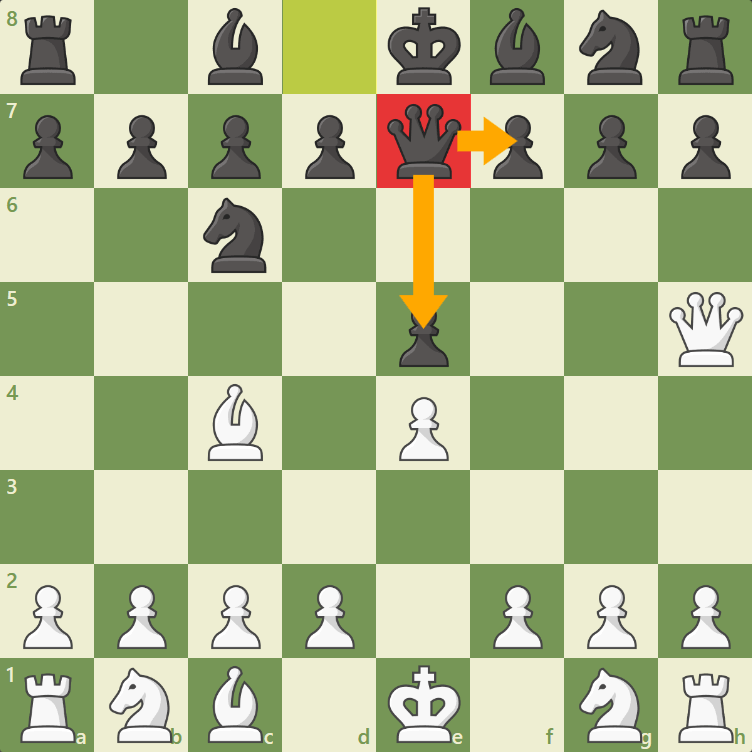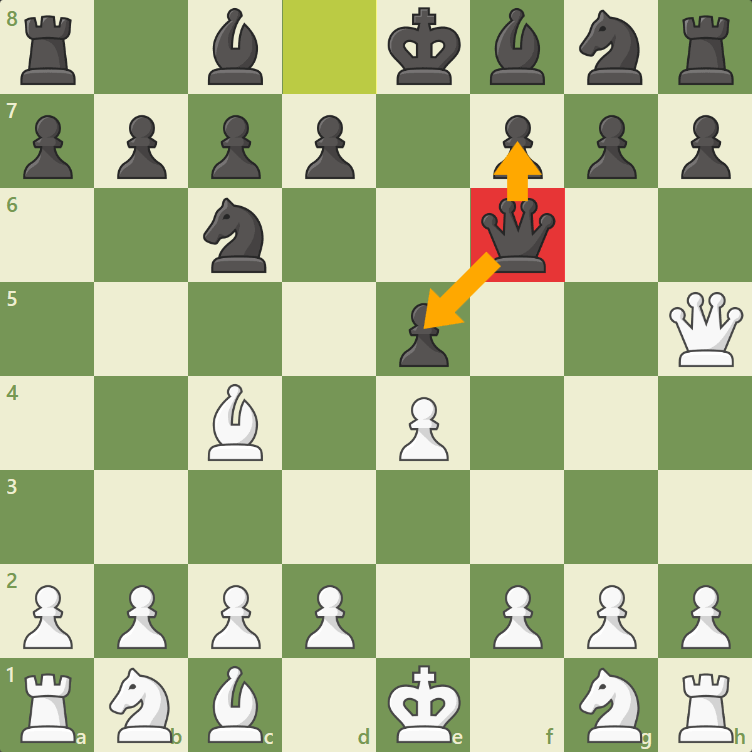
Scholar's Mate
Can you imagine if there was a way to defeat your opponent after just four moves? It turns out that this is a possibility in chess, and it is known as the Scholar's Mate.
Here is what you need to know about the Scholar's Mate:
What Is The Scholar's Mate?
The Scholar's Mate is one of the most well-known checkmating patterns among chess players. It ends the game after only four moves by attacking the weak f-pawn with a bishop and a queen. The f7-pawn is considered weak because it is solely defended by the king, and for this reason it is a common target in many opening traps.

Like the Fool's Mate, it is one of the fastest ways a player can checkmate their opponent in chess. It occurs after 1.e4 e5 2.Bc4 (targeting f7) Nc6 3.Qh5 (adding another attacker to the f7-pawn) Nf6?? 4.Qxf7#.
The Scholar's Mate is common among beginners, and most players have fallen for it or won a game with it at one point in their lives. It is rare to see intermediate or advanced players attempting this attack since it is easy to defend against and can lead to a worse position if it fails.
Sometimes, though, even professional players try to use it, especially in fast time-controls. Below, you can see an international master going for a Scholar's Mate against the 16th World Champion Magnus Carlsen during a Titled Tuesday tournament from 2017 on Chess.com.
How To Defend Against The Scholar's Mate
If you are familiar with the Scholar's Mate and you notice your opponent is trying to use it against you, it is quite easy to defend against it. There are three main options to avoid falling victim to it. Let's look at them one by one. Remember, this is our starting position:

The move g6 is the most sensible response to the threat of a Scholar's Mate. It frees up the g7-square for Black to fianchetto their bishop to create a solid structure on the kingside and to put the dark-squared bishop on its longest diagonal. It also starts clearing the way for Black to castle. Besides all of that, it wins a tempo because it threatens the white queen, forcing White to move their lady away from danger.

Another option to defend against this attack is to move your queen to the e7-square. This move protects the f7-pawn, develops the queen, and adds another defender to the e5-pawn. This move comes with two drawbacks: it blocks the dark-squared bishop and brings out the queen too early.

Finally, another way of protecting yourself from this mating threat is to move your queen to the f6-square. This maneuver achieves similar defensive goals as the last move. Unfortunately, like the previous option, it creates difficulties for one of your minor pieces to develop and exposes your queen, so it is not the most recommended response.

When defending against this mate, it is essential not to fall for some common traps. The diagram below shows a few of those traps and how to defend against them.
Although the promise of a four-move checkmate seems appealing, it is also risky to go for it in a game. If White is not careful, Black can exploit the fact that the white queen is vulnerable to gain a lead in development.
Test Your Skills
Now that you are familiar with the Scholar's Mate, let's see if you can use it to win a game and also defend against it. Solve the puzzles below to check if you are ready to handle this sort of position when playing chess.
Puzzle 01: You are playing as White, and you want to deliver a Scholar's Mate. Can you do it?
Puzzle 02: Your opponent is trying to end the game quickly and goes for a mating attack against you. Can you defend yourself against it, prepare to develop your dark-squared bishop, and take advantage of White's imprecise play?
Conclusion
You now know about one of the most common checkmates in chess. You can identify it, use it, and defend yourself against it efficiently. Head over to our Lessons page to learn other checkmating patterns so you can win more games!









